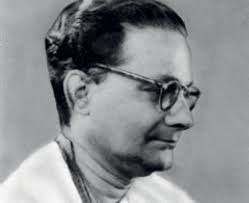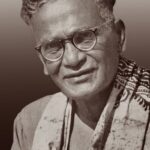Mukul Chandra Dey: 6 Unforgettable Contributions to Indian Art and Society
Mukul Chandra Dey, an iconic figure in the Indian art world, was a revolutionary artist whose contributions shaped the future of modern Indian art. Born on 18th September 1895 in Kolkata, Dey’s legacy has been far-reaching, not just as a remarkable artist but also as a teacher who inspired generations of future artists. Known for his dedication to the art of printmaking, Dey introduced a new medium to India, making significant contributions to both the Indian and global art scenes. Let’s explore his life, work, and lasting impact.
Early Life and Education
Mukul Chandra Dey’s interest in art was nurtured from an early age. Raised in Kolkata, he was exposed to both Indian culture and Western ideas, which shaped his artistic sensibilities. He pursued his formal education at the Government School of Art in Kolkata, where he learned under some of the most eminent artists of the time. Dey’s formative years were also marked by his deep appreciation for the traditional Indian art forms, which he later fused with contemporary techniques to create a distinctive style.
It was his time at Santiniketan, where he studied under the guidance of the renowned artist Nandalal Bose, that further refined Dey’s artistic journey. Dey became not only a student but a disciple of Bose’s vision for the revival of Indian art, and he was deeply influenced by the school’s ethos of blending modern and traditional artistic practices.
Key Contributions and Artistic Style
- The Master of Printmaking: Mukul Chandra Dey is best remembered for his exceptional contribution to printmaking, an art form that was virtually unknown in India at the time. He was one of the first artists to introduce the technique of etching and lithography to Indian art. His mastery of these printmaking techniques was groundbreaking, and his works captured the essence of Indian life, culture, and history. Dey’s prints are characterized by their intricate details, which reflect the meticulous nature of his craft.
- Blending Western Techniques with Indian Themes: Although Dey was trained in the Western tradition of art, his works always reflected his deep-rooted connection to Indian culture. His prints, paintings, and sketches often depicted Indian scenes and motifs, such as rural life, traditional Indian festivals, and famous historical figures. This blending of Western techniques with Indian themes helped Dey stand out in the Indian art scene, and he became a prominent figure in the Bengal School of Art.
- Influence on Indian Modern Art: Dey was a key player in the evolution of modern Indian art. He was part of a movement that sought to reclaim India’s cultural identity from colonial influence. Dey’s works contributed to the narrative of Indian modernism, as he believed in a fusion of indigenous traditions and contemporary practices. His prints were not only aesthetically pleasing but also deeply meaningful, with each work telling a story of Indian heritage and the complexities of modern life.
- Role in Education and Mentorship: Mukul Chandra Dey was not just an artist but a dedicated teacher. He was one of the founding members of the Indian Society of Oriental Art and later became a prominent faculty member at the Government School of Art in Kolkata. His efforts to teach printmaking and his passion for spreading the knowledge of art had a lasting impact on future generations. Through his mentorship, Dey trained many renowned artists who went on to make their own mark in the Indian art world.
- Recognition and Awards: Dey’s contributions to the world of art were recognized during his lifetime. His works were featured in numerous exhibitions both in India and abroad, where they received critical acclaim. He was awarded the prestigious title of Shilpi Samman by the Government of India, and his works were included in major collections across the globe, further solidifying his place as one of India’s most important artists.
- Legacy of Art and Culture: Dey’s legacy extends beyond his artistic work. As a teacher and mentor, he helped shape the careers of many influential artists. His commitment to preserving Indian traditions while embracing modern techniques has left a profound imprint on the trajectory of Indian art. Mukul Chandra Dey’s contributions to Indian culture, particularly in the fields of printmaking and modern art, continue to inspire artists and art enthusiasts alike.
Daily Life and Social Impact
Mukul Chandra Dey’s daily life was marked by discipline and a deep commitment to his art. He lived and worked in Kolkata, where he maintained a studio where he often worked alongside his students. His approach to life was reflective and simple, prioritizing the act of creating art above all else. For Dey, art was not just a profession—it was a way of life, an expression of his spiritual beliefs and a tool for cultural revival.
As an artist and teacher, Dey’s work was always centered on his desire to contribute to India’s cultural renaissance. During the years leading up to and following India’s independence, Dey’s works became a symbol of the nation’s emerging identity. He used his art as a vehicle to promote Indian unity, and his prints were used to raise awareness about social issues, encouraging people to reflect on their society and history.
Important Facts About Mukul Chandra Dey
- Pioneer of Printmaking: Dey was instrumental in bringing printmaking to India and developing it into an art form in its own right.
- Prolific Artist: His body of work includes a wide range of subjects, from portraits to rural scenes, all of which showcased his exceptional skills and versatility.
- Mentor to Future Generations: Dey trained and influenced many of India’s leading artists, including his students at the Government School of Art.
- Global Recognition: Dey’s works were not only celebrated in India but also gained recognition at various international exhibitions, highlighting his global influence.
- Integral to the Bengal School of Art: Dey was an important figure in the Bengal School, a movement that sought to revive traditional Indian art and establish a unique Indian identity through art.
- Use of Art for Social Causes: His works often carried social and political messages, making him an important figure in the Indian freedom struggle as well.
FAQs
Q: What was Mukul Chandra Dey’s most famous work? A: Dey is particularly known for his printmaking works, with “The Last Supper” and “The Indian Village” being two of his most famous pieces.
Q: How did Mukul Chandra Dey influence Indian art? A: Dey revolutionized Indian art by introducing printmaking techniques and combining Western methods with Indian subjects, which helped modernize the Indian art scene.
Q: Where did Mukul Chandra Dey teach? A: Dey taught at the Government School of Art in Kolkata, where he mentored numerous young artists.
Q: Was Mukul Chandra Dey involved in any social movements? A: Yes, his art often reflected social and political issues, and he was an important figure in the Bengal School of Art, a movement that sought to reclaim India’s cultural identity.
Conclusion
Mukul Chandra Dey’s life and work represent a unique fusion of artistic brilliance and cultural devotion. His pioneering efforts in printmaking, his dedication to Indian traditions, and his significant influence on future generations of artists make him an essential figure in the history of Indian art. Through his art and teaching, Dey not only helped modernize Indian art but also contributed to the cultural renaissance that played a crucial role in shaping the identity of independent India.











continuously i used to read smaller posts that also clear their
motive, and that is also happening with this piece of writing which I am reading
at this time.